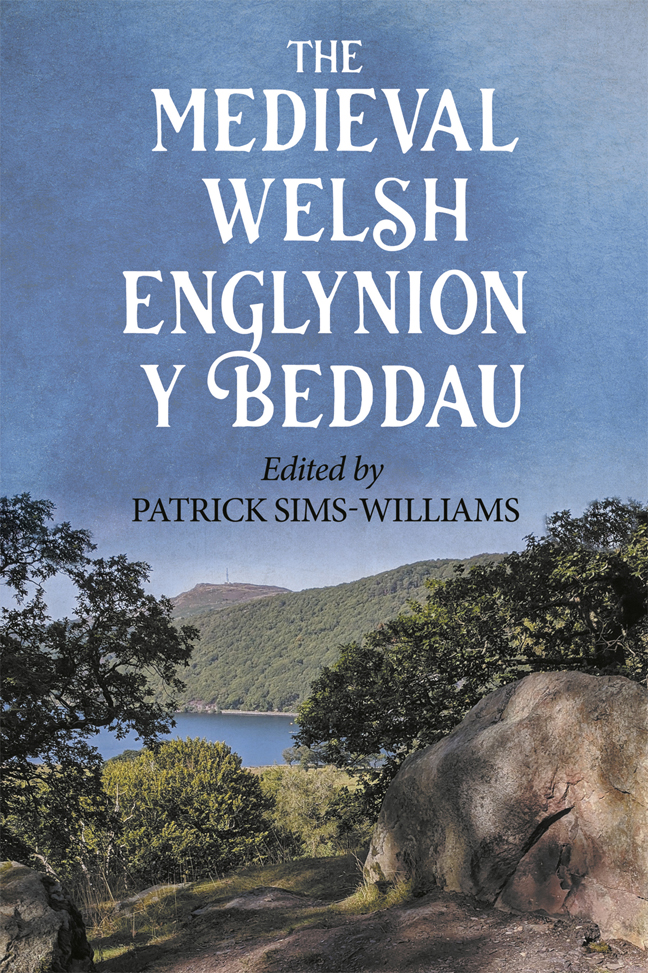 The Medieval Welsh Englynion y Beddau
The Medieval Welsh Englynion y Beddau Introduction
Published online by Cambridge University Press: 02 March 2024
Summary
The anonymous Englynion y Beddau name and describe the burial places of early medieval heroes, providing a key to a narrative literature which is largely lost. In this they resemble Trioedd Ynys Prydain (‘The Triads of the Island of Britain’). While the Triads’ mnemonic function is accomplished by grouping information in threes, Englynion y Beddau are suitable for memorisation because they are metrical and use poetic formulae.
Two series of Englynion y Beddau survive, Series I in the Black Book of Carmarthen (NLW Peniarth 1), c. 1250, and derivatives of it, and Series III in various derivatives of a lost copy, with partially modernised orthography, in a manuscript belonging to William Salesbury (c. 1510–c. 1580). The so-called ‘Series II’ and ‘Series IV’ are not true ‘series’ (see below, p. 18). A reference such as I.10 or III.10 refers to the number of the stanza (usually in englyn metre) within the relevant series, and a reference such as I.10c refers to the line (here the third) within the stanza.
On 32r of the Black Book a late medieval scribe added the title Englynnionn y Beddev. This is the first attestation of the now customary title, translated as ‘The Stanzas of the Graves’ by Thomas Jones in his 1967 edition. He also included the alternative title Beddau Milwyr Ynys Prydain, ‘The Graves of the Warriors of the Island of Britain’. Although not attested before the early seventeenth century, this title is quite apt. All stanzas, except one (I.70) which was added to the Black Book of Carmarthen by a second thirteenth-century scribe, refer to men rather than women; even Branwen, whose grave is described in the Second Branch of the Mabinogi, is missing. With the exception of Beli ab Benlli Gawr – another addition (I.73) – the warriors seem to be humans rather than giants, although that distinction was fluid and could change over time. Typically the men are heroes praised for their ferocity in battle. They come from the whole of Britain, including Mercia and present-day Scotland. Warriors from the ‘Old North’ include Cynon ap Clydno Eidyn (I.8–11), Owain ab Urien, and Rhydderch Hael (I.13–14), Einion ap Cunedda (I.72), Llofan (III.5–8), and Elidir Mwynfawr (III.15). From Wales come Cynddylan of Powys (I.15), Aergol of Dyfed, and Maelgwn Gwynedd’s son, wife, and bard (I.70–71), among many others. From Mercia comes Panna ap Pyd (III.9/I.10).
- Type
- Chapter
- Information
- The Medieval Welsh Englynion y BeddauThe 'Stanzas of the Graves', or 'Graves of the Warriors of the Island of Britain', Attributed to Taliesin, pp. 3 - 13Publisher: Boydell & BrewerPrint publication year: 2023
